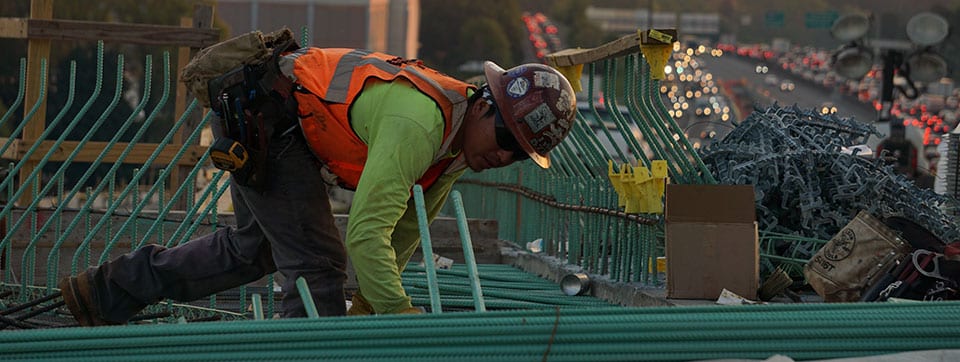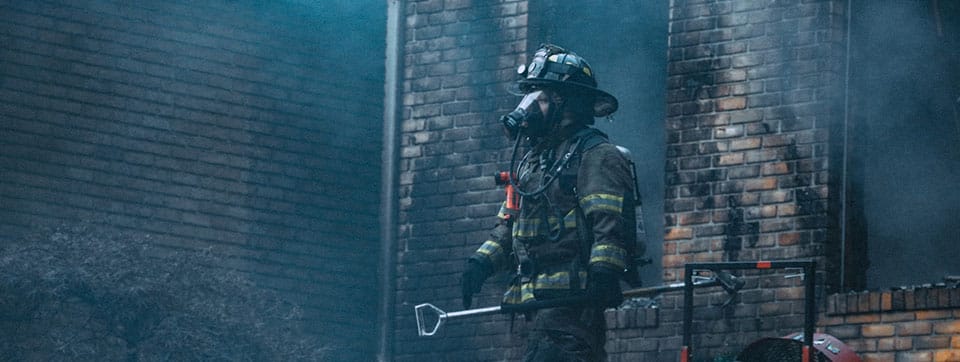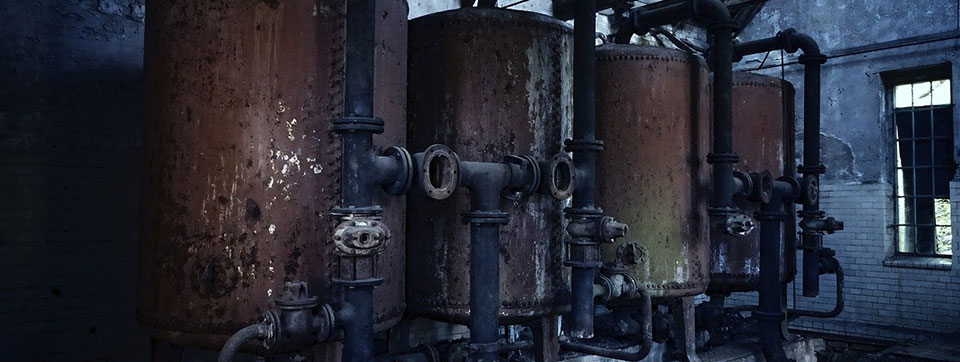Occupational exposure to asbestos is the leading cause of mesothelioma. According to the Centers for Disease Control and Prevention, 27 million American workers experienced exposure to asbestos fibers in the air between 1940 and 1979.[1] Regulations have made workplaces safer, but some workers still face risks from lingering asbestos.
What Is Asbestos and Why Is it in the Workplace?
Asbestos is a group of natural minerals that were once mined and used heavily in several industries. Asbestos is heat- and fire-resistant. It is lightweight and flexible. It also resists corrosion and chemical reactions.[2]
These properties, as well as its relative abundance in mines, made asbestos an ideal substance for many applications throughout much of the 20th century.
What Regulations Protect Workers from Asbestos?
The Occupational Safety and Health Administration (OSHA) began regulating asbestos exposure in workplaces in 1971. Some of the protections OSHA ensures for workers include:[3]
- A strict asbestos exposure limit of 0.1 fibers per cubic centimeter
- A program to ensure employer compliance with asbestos exposure limits
- Communication requirements to warn workers of their exposure risks
- Monitoring of asbestos exposure and information about exposure levels for workers
- Protective gear for workers at risk of asbestos exposure, including respirators
- Maintenance and disposal procedures for asbestos protective gear
- Medical surveillance programs to monitor the health of any workers exposed to asbestos
In addition to OSHA’s workplace safety measures, the Environmental Protection Agency banned asbestos in many products, reducing the total amount of asbestos in workplaces.
Despite regulations, asbestos is still in many materials used in ships, buildings, cars, airplanes, and more. Also a danger is the asbestos in older materials that continue to affect workers.
How Do I Know if My Workplace Has Asbestos?
If you work in any of the at-risk or low-risk professions for asbestos exposure, this harmful substance could be in your workplace. Workers have a right to know their exposure limits and risks. Employers have a responsibility to keep workers informed about asbestos.
Ask your supervisor if you have concerns or want more information about asbestos in your workplace. If your employer does not provide that information, you can file a complaint with OSHA, and they will investigate.
At-Risk Professions for Asbestos Exposure

Exposure to asbestos on worksites is down compared to decades ago. Several jobs still pos a risk of asbestos exposure for workers. There are also jobs and work environments that, in the past, exposed workers who are still suffering the consequences today.[1]
Construction
Of all professions, construction workers carry some of the highest risks for asbestos exposure, both in the past and today. Construction materials once contained asbestos, from roofing tiles to drywall compound to insulation.
In the construction field, those workers at greatest risk do renovation and demolition. Exposure occurs when demolishing, removing, or maintaining older asbestos-containing materials. Asbestos is still used in some new construction materials, putting workers in new construction at risk.
Some of the people on construction sites with a high risk of exposure to asbestos include:
- Demolition workers
- Laborers
- Electricians
- Plumbers
- Insulation installers
- Roofers
- Carpenters
- Remodelers and renovators
- HVAC workers
Industrial and Factory Workers
Workers in factories, machinists, certain types of mechanics, and insulators have all risked asbestos exposure, mostly in the past, but today too.
Many products made in factories, including insulation, paper, textiles, chemicals, cement, and mechanical equipment, contained asbestos. Workers who made these products and worked with them in other jobs risked exposure.
Firefighters and Emergency Responders

Firefighters are put at risk of exposure because fire can destroy products that contain asbestos and cause the fibers to become airborne. Firefighters also risked exposure because they wore safety equipment that contained asbestos.
Other emergency responders may also risk exposure when on the site of a burning building. One extreme example of this occurred on September 11, 2001, when the World Trade Center collapsed and sent asbestos fibers airborne.
Shipyard Workers
Ships are among the most significant sources of asbestos. Shipbuilders used asbestos in insulation and to protect vessels from fire. At one point in time, asbestos could be found in nearly all components of a ship.
Workers building ships in shipyards and those who worked aboard them risked exposure. The highest risks occurred in areas with a lot of insulation, such as the boiler or engine rooms.
Power Plants and Oil Refineries
Power plants and refineries, like ships, also need fireproofing material. In the past, asbestos was used extensively in these settings. Today, power plant and refinery workers still risk exposure while doing maintenance or repair work and if a disaster spreads asbestos into the air.
Boiler Workers

The hazard with boilers and boiler rooms comes from the extensive use of insulation in these high-temperature environments. Workers who assembled, repaired, maintained or operated boilers have risked asbestos exposure.
All types of insulation in the past contained asbestos. Workers who spent time in boiler rooms decades ago may have the greatest risk of all professions of exposure to asbestos.
Textile Mills
Much of the asbestos risk from working in textile mills has passed. Workers who made textiles before the 1980s were likely exposed and put at risk for mesothelioma. Today textile factory workers still may be exposed through the equipment they use.
Steel Mill Workers
Steel production in the U.S. is much lower than in the past, but it is still an important industry. Steel mills were once constructed with asbestos in many components to protect against the high temperatures involved and the risk of fire.
Machine Operators
Machine operators work with heavy equipment. To reduce the heat generated by friction between components, a lot of machinery and heavy equipment was made with asbestos components. Operators risk exposure to asbestos dust because these parts deteriorate over time.
Miners
Mining is a high-risk career for exposure because asbestos is a natural mineral found in the ground. Asbestos miners have always been at risk, but those working in other types of mines may still risk exposure. For instance, vermiculite miners may be exposed to asbestos intrusions in the mine.
U.S. Navy Veterans
A special and important case of workers who were at risk of asbestos exposure in the past is Navy service men and women. Mesothelioma rates are higher in Navy veterans than in the general population.
Navy ships were once constructed with asbestos in nearly every component. This put sailors and officers at risk of exposure that led to diagnoses of asbestos illnesses decades later.
Careers with Moderate Occupational Asbestos Risk
Some careers today carry a moderate-to-low risk of exposing workers to asbestos. Of course, there is no amount of exposure that is safe.
- Auto mechanics work with car parts that often still contain asbestos, as well as on older cars with asbestos parts. Hoodliners on older cars used asbestos for fire resistance, and today brakes and clutches still contain asbestos that can become airborne during repairs.[1]
- Other kinds of transportation workers may also be at some risk of asbestos exposure. This includes aircraft mechanics and railroad workers. Like automobiles, aircraft and trains often contained asbestos in friction parts.
- Teachers are at low risk of asbestos exposure today, but they may still experience exposure through school building drywall, soundproofing materials, insulation, floor tiles, paint, and ceiling tiles. Teachers working in older school buildings have the highest risk of exposure. Regulations do exist to contain or abate existing asbestos.[1]
- often work with machinery, equipment, tools, and parts that contained asbestos. Mechanica, civil, and electrical engineers are most likely to have worked with or around asbestos.
- Other careers that put workers at some risk of asbestos exposure include anyone in a building that was constructed before the 1980s. Unless the building underwent a complete abatement, it could still contain asbestos and put workers at risk of exposure.
- Migrant and farm workers might encounter asbestos in brakes and clutches in farm equipment or in older buildings. Working in the soil can also lead to exposure if there is naturally-occurring asbestos in the area.
How Workers Can Protect Themselves from Asbestos Exposure?
OSHA sets health and safety regulations for all aspects of workplace safety. Regulations include limitations on exposure to asbestos and safety procedures to be followed by employers and workers. Workers should familiarize themselves with OSHA asbestos regulations, follow procedures, and use safety equipment.[4]
Workers who do not feel safe in their working environment because of asbestos should talk to their employers. If employers do not provide adequate safety measures, such as appropriate equipment, contact OSHA.
OSHA representatives take complaints and inspect work sites to ensure employers follow regulations. All workers have a right to a safe workplace, and if you feel you may be exposed to asbestos, you have a right to file a complaint and take steps to ensure your safety.[2]
Workers can also contact groups specific to their jobs or industries for more information. For instance, you can contact your labor union representative.
What Can I Do if I Was Exposed to Asbestos on the Job?
The most important thing to do first is to see your doctor to talk about screenings for asbestos illnesses. If you receive a diagnosis of mesothelioma, see a specialist with experience treating patients with this rare disease.
Compensation for Victims of Occupational Asbestos Exposure
If you do get a diagnosis of mesothelioma and it is connected to workplace exposure, you have legal options. Contact an asbestos attorney for a free evaluation of your case and to determine your options, which might include:
- VA Benefits. If you are a veteran and can connect your diagnosis to asbestos exposure during your service, you could be eligible for VA benefits. These include monthly disability payments, compensation for dependants, and free medical care.
- Lawsuits and Settlements. If you can connect your exposure to specific companies that supplied your workplace with asbestos, you can file a lawsuit. Many of these cases result in substantial settlements for the victims.
- Asbestos Trust Fund Claims. Many of the companies that supplied asbestos and asbestos-containing products went bankrupt. They set up trust funds as part of the process to compensate future claimants.
Occupational exposure to asbestos is not just a risk of the past. Federal regulations have indeed improved working environments considerably, but modern workers in several industries are still at risk. It is always necessary to know the risks, to understand what rights workers have in the workplace, and to be aware of and to follow all safety procedures regarding asbestos.

Mary Ellen Ellis
WriterMary Ellen Ellis has been the head writer for Mesothelioma.net since 2016. With hundreds of mesothelioma and asbestos articles to her credit, she is one of the most experienced writers on these topics. Her degrees and background in science and education help her explain complicated medical topics for a wider audience. Mary Ellen takes pride in providing her readers with the critical information they need following a diagnosis of an asbestos-related illness.

Dave Foster
Page EditorDave has been a mesothelioma Patient Advocate for over 10 years. He consistently attends all major national and international mesothelioma meetings. In doing so, he is able to stay on top of the latest treatments, clinical trials, and research results. He also personally meets with mesothelioma patients and their families and connects them with the best medical specialists and legal representatives available.
References
- Agency for Toxic Substances and Disease Registry. (2014, January 29). Asbestos Toxicity. Who is at Risk of Exposure to Asbestos?
Retrieved from: https://www.atsdr.cdc.gov/csem/asbestos/who_is_at_risk.html - Occupational Safety and Health Administration. (n.d.). Asbestos.
Retrieved from: https://www.osha.gov/asbestos - Occupational Safety and Health Administration. (n.d.). 1910.1001 – Asbestos.
Retrieved from: https://www.osha.gov/laws-regs/regulations/standardnumber/1910/1910.1001 - Occupational Safety and Health Administration. (2014, January). Asbestos.
Retrieved from: https://www.osha.gov/Publications/OSHA3507.pdf


